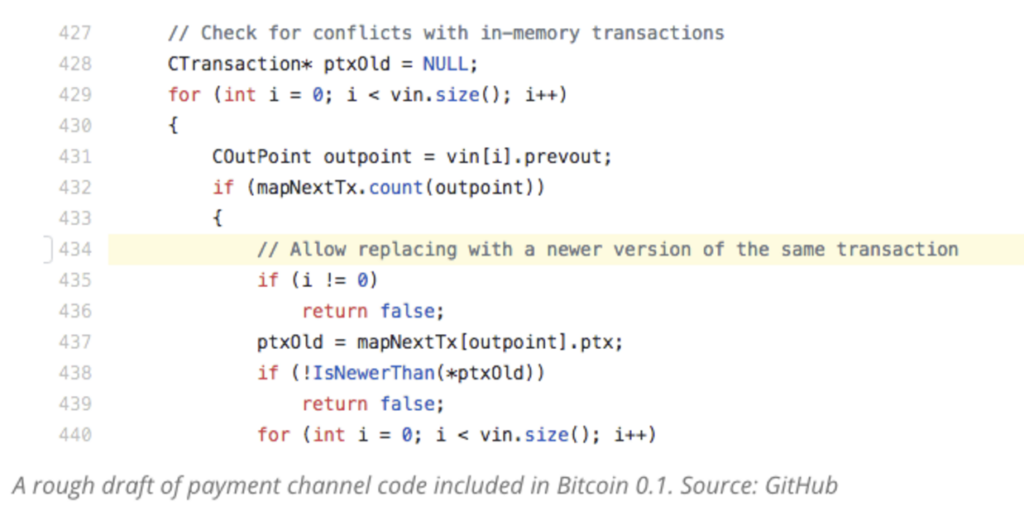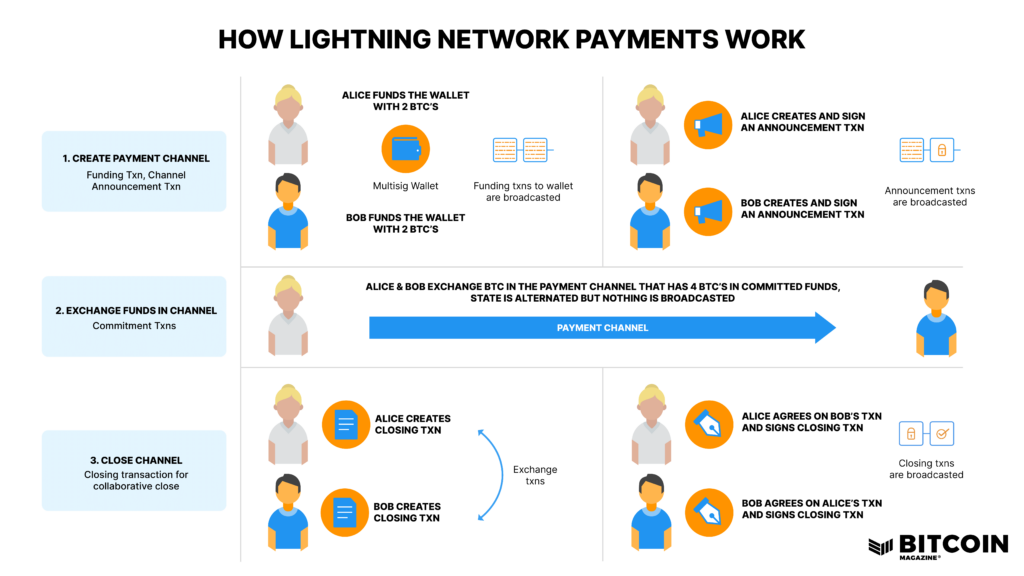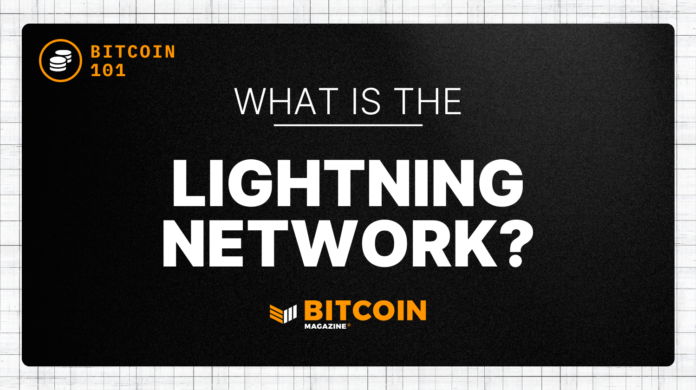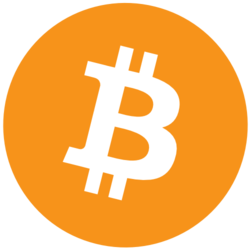The Lightning Network is a solution to Bitcoin’s scalability requirement. It’s a second-layer network of interconnected nodes built on the Bitcoin blockchain to speed up transaction times and decrease network congestion for instant, secure and low-cost micropayments.
The transaction mechanism between two parties occurs off-chain, removing much data from the base layer blockchain, thereby facilitating speed and transaction traffic. Lightning users do not need to wait for Bitcoin blockchain confirmations every ~10 minutes; therefore, transactions are instant.
Indeed, Lightning payments are not recorded on Bitcoin’s blockchain — only channel-funding and channel-closing transactions are. This effectively means that many more Lightning transactions can be settled with fewer on-chain Bitcoin transactions — a benefit that translates into lower fees for Lightning users without delegating custody of funds.
Like the Bitcoin blockchain, the Lightning Network doesn’t need a financial intermediary to process, verify and approve transactions.
Origins Of The Lightning Network
The story of the Lightning Network’s evolution is fascinating. Initially proposed by Joseph Poon and Tadge Dryja in 2015, an early version of the whitepaper was released that same year. The official version was then published on January 14, 2016, detailing a second-layer payment network aimed at facilitating faster and more affordable transactions.
However, the idea was not new; in fact, in the very first Bitcoin software release (Bitcoin 0.1), Satoshi Nakamoto himself had already drafted a code that would let users update a transaction before it was confirmed:

The Lightning Network, or simply “Lightning,” is based on a concept called “payment channels,” which are essentially bitcoin balances between two users. The rest of the world does not need to know — or even care — about their mutual balances, nor does the entire network need to be burdened with their transaction data. Balances can be updated without miners needing to verify and process transactions as is required in on-chain Bitcoin transactions.
Poon and Dryja believed that a network of micropayment channels built on top of the base chain would be more suited to fix Bitcoin’s scalability issues as it would not require significant changes in the Bitcoin network itself to allow more efficient and cheaper transactions. Work on the Lightning Network picked up momentum as developers began working on the project.
The blockchain engineering lab behind Lightning helped launch its beta version in March 2018. It was initially funded via a $2.5 million seed round, which included notable investors Jack Dorsey and Blockstream. Dorsey’s company, Square, has since funded several grants for Bitcoin and Lightning Network projects.
In keeping with Satoshi’s vision for Bitcoin, Lightning Labs created a permissionless network, which is deployed on the internet and runs on thousands of nodes worldwide, making it difficult to control as it’s not run on centralized servers.
How Does The Lightning Network Work?
The Lightning Network is a decentralized payment channel network that uses blockchain smart contract functionality to enable instant payments among participants. It is run by a network of nodes that process payments, and transactions are commonly made using QR codes instead of complex public keys. Thousands, or even hundreds of thousands, of transactions can take place instantly, making small-value transactions economical.
A payment channel can be described as a complex type of multisignature address containing funds shared by two users having the other’s presigned revocation key to the 2-of-2 multisig wallet that is their channel. When a payment between them occurs, they update their respective balance of funds at that address.

Using these payment channels between participants, the Lightning Network can handle transactions without waiting for the leading network to confirm them, saving time and fees. Between the opening and closing of a channel, parties can shift funds between themselves as needed until they close the channel. Only once the channel is closed does the final channel state confirm on the main blockchain.
To ensure that neither user can cheat and claim more than their share, complex safety precautions, like so-called “watchtowers,” are used (more on that below).
While on Bitcoin, miners are paid fees to include transactions in a block, the Lightning Network doesn’t have miners or blocks, and fees are paid to the nodes that provide liquidity (funded channels) and forward transactions. Since anyone can set up another node, fees must be kept relatively low for the nodes to be competitive.
A payment channel life cycle can be described as follows:
- Alice creates a payment channel with Bob, and they both broadcast a transaction to fund the wallet with 2 BTC.
- Alice and Bob exchange funds in the channel as many times as they need, but no transaction between them is broadcasted to the base layer.
- When Alice and Bob do not need to transact anymore they can close the channel and broadcast the closing transaction.

The payment channels are cryptographically linked with other payment channels. Similar to the concept of “six degrees of separation,” as long as users have an active payment channel, they can act as bridges between channels.
In other words, if Alice has a payment channel open with Bob and Bob has a payment channel open with Carol, Alice can pay Carol through Bob in a way that none of the parties involved can cheat by stealing the funds or claiming they have or haven’t sent or received the funds.
To receive a transaction, a Lightning user creates an invoice represented by a long alphanumeric string of digits — or a QR code, more likely. To send the payment, the counterpart simply needs to scan this invoice with their Lightning wallet and confirm the payment through their digital signature. The transaction is nearly instant, and the process requires no intermediate as it’s made peer-to-peer.
What Does It Solve or Enable?
The Lightning Network was initially created to address the Bitcoin blockchain scalability problem, which refers to the limitations on the rate at which the Bitcoin network can process transactions. Per the Blockchain Trilemma, the Bitcoin protocol prioritizes decentralization and security over scalability (and therefore speed), so the number of transactions becomes a binding limit.
As a consequence, each block in the Bitcoin blockchain is limited to 1.5-2MB in size and can only be created approximately every 10 minutes. This means that the Bitcoin network can only process a certain number of transactions per block and per unit of time, approximately 7 transactions per second (tps). Bitcoin’s base layer cannot serve as the world’s payment platform, while the Lightning Network, in contrast, is an excellent method to aggregate all transactions in a way that doesn’t sacrifice the decentralization and security of the base layer network.
Solutions like Lightning will become much more necessary as we move forward into the future. Particularly with the rise in AI and robotics, businesses will seek to reduce credit and debit card processing costs. Bitcoin’s network is not sustainable from an efficiency standpoint, with fees likely to increase on the mainchain, and its eventual progression to being a unit of account will necessitate a fast, efficient and cheap system. Hence, the Lightning Network will play a crucial role as a microtransaction payment system.
Here are the main issues the Lightning Network may resolve.
Micropayments
Lightning enables micropayments without needing an intermediary — at lightning speed and extremely low cost. While it’s not viable for the Bitcoin mainchain to process low-value transactions, the Lightning Network is ideally suited for sending payments as low as 0.00000001 Bitcoin without custodial risk.
As bitcoin’s value has risen to the point that mere fractions of BTC are enough to pay for many goods and services, BTC is more often denominated in satoshis (“sats”) and frequently mentioned when discussing the Lightning Network.
Instant Payments
Since Lightning transactions do not need to worry about block confirmation times, they can occur almost instantaneously while still enjoying the security enforced by the Bitcoin blockchain. It’s finally possible to buy coffee promptly using bitcoin.
Scalability
While Visa’s transaction throughput has a maximum of 47,000 transactions per second (47,000 tps), the Lightning Network is believed to be able to process as many as 1 to 3 million tps.
Advantages of the Lightning Network
Built on the Bitcoin blockchain, Lightning provides the security and decentralization of the leading network with additional benefits over the native blockchain. It solves the scalability problem by taking the transactions off the blockchain and carrying them in Layer 2 blocks, becoming much faster and more efficient. Transactions are performed through a payment channel, a two-party consensus mechanism.
Here are the main advantages of the Lightning Network over Bitcoin’s main network.
- Speed: While Bitcoin’s transactions may take from 10 minutes to several hours to settle, the settlement time for Lightning transactions is under a minute and can even occur in milliseconds.
- Low Fees: Due to its ability to transact off-chain with fees required only to satisfy liquidity providers, the Lightning Network can provide exceptionally low fees, allowing emerging use cases such as instant micropayments without incurring chargebacks or the 3% fee applied by credit card providers like Visa and Mastercard.
- Transaction throughput: It is believed that the network can provide between 1 and 3 million tps, but in reality, there are no limits to the number of payments per second that can occur under the protocol because what matters is only the capacity and speed of each node.
- Granularity: Lightning payments can be as little as 1 satoshi and even smaller, allowing some network implementations to offer endless payment possibilities.
- Privacy: The Lightning Network is more private and anonymous than Bitcoin’s main network due to the details of individual payments not being publicly recorded on the blockchain until a channel is closed. Furthermore, users can enjoy extra privacy if they combine a Tor-like routing algorithm for Lightning.
- Censorship resistance: The extra layer of privacy, combined with Bitcoin’s mainchain censorship resistance, provides the most uncensorable monetary system the world can currently enjoy.
- Energy efficiency: Since transactions are processed off-chain, the Lightning Network requires less energy to process transactions than the Bitcoin network. Also Lightning nodes are more energy efficient than Bitcoin nodes.
Drawbacks and Risks
With its scaling and efficiency potential Lightning offers an alternative to traditional payment systems, but it comes with trade-offs and risks that should be taken into account, especially if we consider that mass adoption is still far from occurring.
We can view some of Lightning’s drawbacks, which, depending on the perspective, can also be advantages (like the low fees).
- Hacks: Lightning transactions are not broadcasted to the entire Bitcoin network, at least not all of them, which may pose a security risk, opening up potential opportunities for bad actors to operate within the payment channels. As a safety precaution to avoid security risks, it’s always recommended to keep most of the funds in an on-chain wallet and only leave small changes to make everyday purchases in a Lightning wallet.
- Malicious Attacks: Congestion caused by a malicious attack is another risk in Lightning, which may cause a total loss of funds. Simply said, if there is a malicious attack while the payment channels are congested, the participants may not be able to get their money back fast enough due to the congestion overloading the capacity of the block.
- Closed-Channel Fraud: There needs to be trust between the participants in a payment channel, as otherwise, if one participant is absent, the other one could simply close the channel and take the funds. Such risk is often mitigated by watchtowers, a technical feature used to monitor channels (more on watchtowers here). Lightning service providers are also there to reduce the risk of fraud, but any type of solution will only add a vector of centralization to the network.
Real-world Use Cases
While there still exists a lot of skepticism around Lightning as a potentially disruptive global payment system, Lightning Labs devs and the Lightning community keep building tools and services to allow users to enjoy an innovative and efficient system supported by other technologies like AI.
Below are some of the most exciting and innovative use cases for Bitcoin’s Layer 2 network:
- An increasing number of retailers are offering Lightning Network payments to buy coffee, groceries and other small items thanks to the network’s ability to process micropayments at very low fees and superfast speed. For example, at the end of 2022, Pick n Pay — the largest retailer in Africa — started offering LN payments in South Africa to extend the service to over 1,500 stores.
- Remittances at extremely low cost are one of the promising use cases offered by Lightning due to its ability to provide instant and very low-cost transfers. The best example is using the bitcoin payment platform Strike in El Salvador. While the service has yet to find mainstream adoption, mainly due to the currency volatility, as of November 2022, El Salvador had received $6.9 billion in remittances, which makes it a potentially massive market for bitcoin payments. It can improve the lives of millions of people worldwide, enabling them to access funds quickly and affordably, even in regions with limited financial infrastructure.
- Digital Tipping: Zaps, integrated on Nostr in mid-February 2023, is a tipping service that uses the Lightning Network to send a small micropayment in sats to another user. Participants can send Nostr users tips to reward specific posts by those users. The zaps are displayed on a post in a similar way that “likes” are on other social networks such as Facebook or Twitter.
- Exchange withdrawals will be a valuable case for those who use exchanges to buy bitcoin but have always been put off by their high fees. Kraken is one of the first significant exchanges implementing Lightning for bitcoin withdrawals.
- Functions like Pay-Per-Play or Listen-to-Earn will benefit enormously from Lightning. Apps like Fountain Podcast allow listeners to earn BTC through Lightning by listening to content streamed via the app. Combined with AI, these functions become even more powerful as Lightning and AI developer communities build global and inclusive LLM (large language model) tooling that seamlessly incorporates Lightning and bitcoin.
- Pay-per-view micropayments and micro-subscriptions are some of the most promising use cases of the Lightning Network to reward user engagement.
- Automation and AI: The fusion of AI and Lightning has opened endless opportunities to content creators, viewers and listeners. Devs can create an AI agent to hold a bitcoin balance, send/receive via Lightning or do certain functions to control a Lightning node. They can develop a pay-per-use API that gives out quotas by paying small Lightning invoices.
- Spam/Scam reduction: Lightning enables a hashcash-type solution for bots to pay to play instead of functioning as a limitless drain on resources. This defensive mechanism can help reduce or eradicate webspam and DDOS attacks. Adam Back and Michael Saylor have been pushing for a similar type of solution to be incorporated into Twitter (or X) to solve the spambot problem without compromising privacy.
Looking into the future
The Lightning Network’s potential transcends merely improving Bitcoin’s scalability. By enabling micropayments, revolutionizing remittances, empowering tipping and donations and unlocking new opportunities in decentralized finance, Lightning can play a crucial role in the evolution of digital transactions and the future of finance, especially when combined with innovative techs like AI and LLM.
Services like Pay-per-Play, Pay-per-View and Listen-to-Earn are only a few of the potential scopes that Lightning can offer to the internet crowd that uses social media, podcasts and advertisements.
We should expect existing payment processors to begin routing payments through Lightning since it’s cheaper, more efficient and has no chargebacks.


